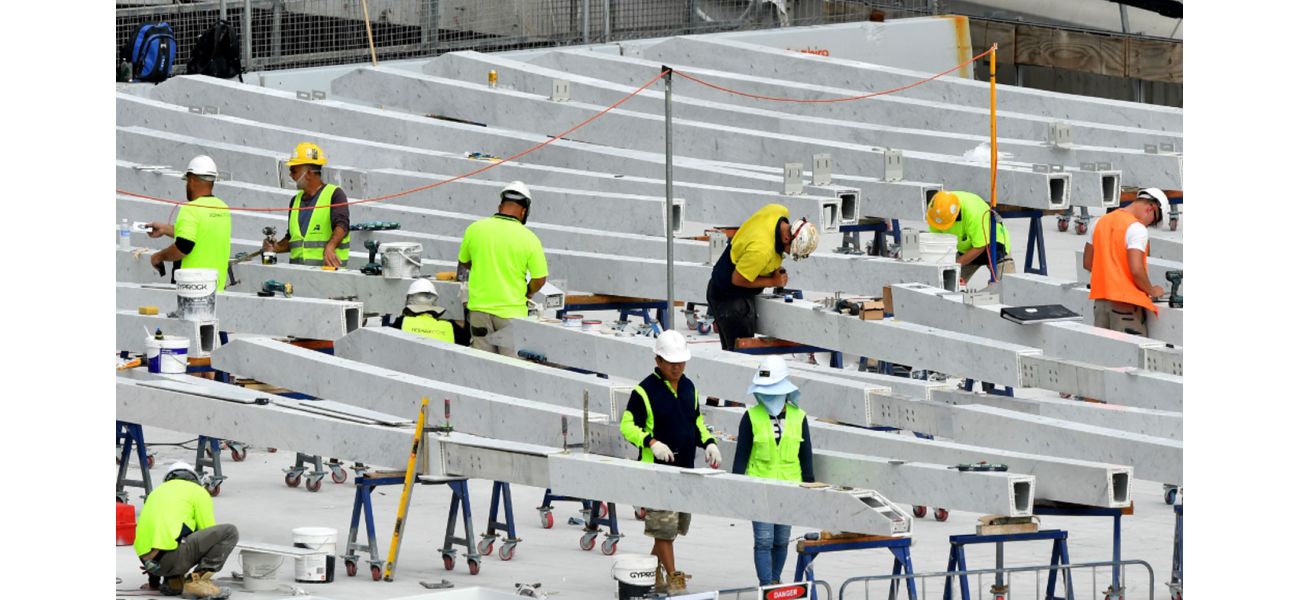Home construction has hit a 40-year low, according to a recent report.
Experts cite lack of funds & resources as deterrent to investing in Australia's housing supply.
November 27th 2024.

According to recent research, the construction of new private homes in Australia has reached its lowest point in nearly four decades, while the amount of money spent on renovations has skyrocketed. The professionals at KPMG have analyzed this trend and discovered that per capita spending on new private home building has fallen to its lowest level since the late 1980s. On the other hand, renovation spending has increased significantly, from 34.2% of total residential construction spend in 2018-2019 to 40% in 2023-2024.
KPMG's urban economist Terry Rawnsley explains that for every nail hammered and brick laid in residential construction, 40% of the funds are now going towards renovating existing homes. This suggests that there is not enough investment and resources being directed towards expanding the housing stock. Rawnsley also notes that the easier planning processes and lower risks involved in renovating existing homes make it a more attractive option for builders, compared to constructing multiple new homes on the same block.
Interestingly, the report reveals that almost 10% of new private residential building spending is being used for one-for-one replacements. This means that a detached home is demolished and replaced with a single new home. Victoria currently has the highest rate of one-for-one replacements at 12.6%, followed by Western Australia and New South Wales at 8.7%. This trend has been largely influenced by the pandemic, as the decrease in international migration has led to a decrease in demand for new dwellings. In addition, lower interest rates, an abundance of construction labor, and an increase in home upgrades during lockdown have also contributed to the rise in one-for-one replacements.
Coastal and inner city suburbs are seeing the most significant increase in renovation spending. This is partly due to the high property values in these areas, as well as the availability of desirable amenities. These factors make one-for-one replacements a financially viable option. In inner city areas, strict planning and heritage regulations also play a role in preventing multiple dwellings from being added to a single block.
The research from KPMG shows that the Brisbane local government area has the highest spending on renovations, followed by Sydney's Northern Beaches and Melbourne's eastern suburb of Boroondara. To encourage investment in increasing housing density, rather than one-for-one replacement, there needs to be clear planning benchmarks in place. Rawnsley emphasizes that while homeowners have every right to renovate their homes and add value to their investment, shifting some of the labor and resources towards constructing new housing can help alleviate the current housing shortage.
In conclusion, the construction of new private homes in Australia has hit a low point, while renovations have become increasingly popular. This has been influenced by various factors, including the pandemic and the availability of labor and resources. To address the current housing shortage, it may be necessary to shift focus towards constructing new homes rather than replacing existing ones.
KPMG's urban economist Terry Rawnsley explains that for every nail hammered and brick laid in residential construction, 40% of the funds are now going towards renovating existing homes. This suggests that there is not enough investment and resources being directed towards expanding the housing stock. Rawnsley also notes that the easier planning processes and lower risks involved in renovating existing homes make it a more attractive option for builders, compared to constructing multiple new homes on the same block.
Interestingly, the report reveals that almost 10% of new private residential building spending is being used for one-for-one replacements. This means that a detached home is demolished and replaced with a single new home. Victoria currently has the highest rate of one-for-one replacements at 12.6%, followed by Western Australia and New South Wales at 8.7%. This trend has been largely influenced by the pandemic, as the decrease in international migration has led to a decrease in demand for new dwellings. In addition, lower interest rates, an abundance of construction labor, and an increase in home upgrades during lockdown have also contributed to the rise in one-for-one replacements.
Coastal and inner city suburbs are seeing the most significant increase in renovation spending. This is partly due to the high property values in these areas, as well as the availability of desirable amenities. These factors make one-for-one replacements a financially viable option. In inner city areas, strict planning and heritage regulations also play a role in preventing multiple dwellings from being added to a single block.
The research from KPMG shows that the Brisbane local government area has the highest spending on renovations, followed by Sydney's Northern Beaches and Melbourne's eastern suburb of Boroondara. To encourage investment in increasing housing density, rather than one-for-one replacement, there needs to be clear planning benchmarks in place. Rawnsley emphasizes that while homeowners have every right to renovate their homes and add value to their investment, shifting some of the labor and resources towards constructing new housing can help alleviate the current housing shortage.
In conclusion, the construction of new private homes in Australia has hit a low point, while renovations have become increasingly popular. This has been influenced by various factors, including the pandemic and the availability of labor and resources. To address the current housing shortage, it may be necessary to shift focus towards constructing new homes rather than replacing existing ones.
[This article has been trending online recently and has been generated with AI. Your feed is customized.]
[Generative AI is experimental.]
0
0
Submit Comment





